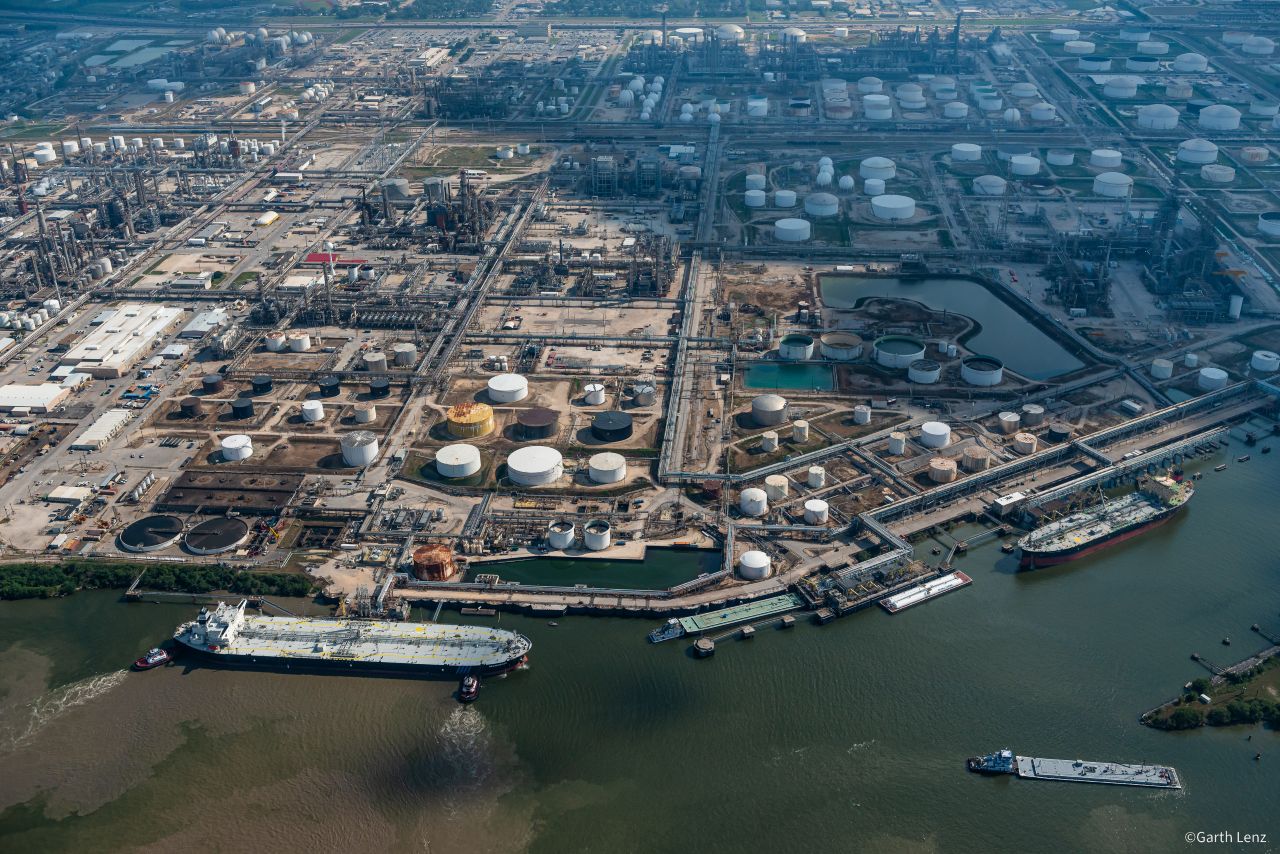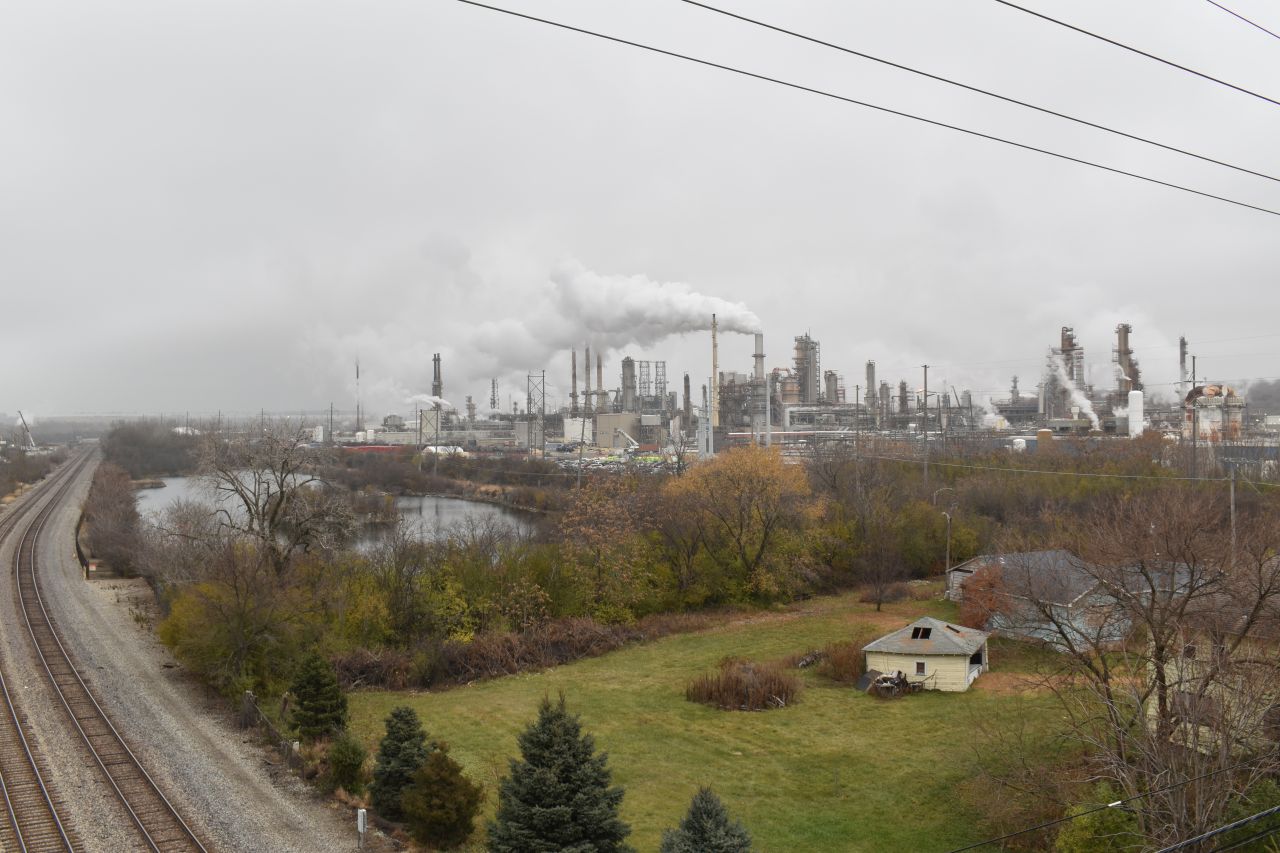Mitsubishi seeks tens of millions in Louisiana tax breaks for largest plastics plant of its kind

A division of the Japanese industrial conglomerate Mitsubishi is planning to build the world’s largest plastics plant of its kind in Geismar, Louisiana, a heavily industrialized area along the Mississippi River where cancer risk from toxic air pollution is already three times the U.S. average.
On 77 acres of wetland and forest surrounded by other industrial sites, Mitsubishi Chemical plans to build a plant capable of producing 350,000 tons per year of methyl methacrylate (MMA), a chemical used in a variety of consumer and medical products – including automotive rear lights, signs, lighting, flat screen TVs, dental products, and acrylic paints.
Mitsubishi, which had a net income of more than $1.6 billion in 2021, is hoping receive an 80-percent reduction in local government and school district property taxes district in Ascension Parish, Louisiana, located about 30 minutes south of Baton Rouge. The tax breaks could add up to $168 million over 10 years.
The facility would emit hundreds of tons per year of air pollution, according to permit information compiled in the Oil and Gas Watch database. That includes an annual 526 tons of carbon monoxide, 129 tons of nitrogen oxides, 79 tons of volatile organic compounds, 39 tons of fine particles, and nearly 2 tons of sulfur dioxide.
The plant would also emit significant amounts of toxic air pollutants – an annual 22.51 tons of ammonia (which can irritate the eyes and lungs), 16.51 tons of methanol (which can trigger headaches, dizziness and nausea in high enough amounts), 4.68 tons of MMA (a potential irritant to the throat and nose), and 0.72 tons of formaldehyde (a known carcinogen), according to permit documents.
Environmental and faith-based groups have vowed to fight the project. Representatives of 19 groups signed a letter saying they would “challenge the Mitsubishi project by marching, by staging events, chaining ourselves to equipment as well as by utilizing every avenue of litigation.”
“We don’t want to be the epicenter of the world’s largest chemical plants,” Anne Rolfes, director of environmental group Louisiana Bucket Brigade, said in a press conference after the company’s plans were announced. “We’re worth more than that.”
However, state and local officials have sought to attract Mitsubishi by offering generous incentives, including a $4 million grant and access to state tax breaks. In a 2020 announcement, Louisiana Gov. John Bel Edwards said Geismar is already “one of the most advanced chemical manufacturing communities in the world.”
“As we continue to enhance our world-class infrastructure in Louisiana, we are attracting world-scale production facilities like the one proposed by Mitsubishi Chemical,” Edwards said in a prepared statement.
The company is seeking tens of millions in local property tax and sales tax breaks through the state’ Industrial Tax Exemption Program and Quality Jobs programs, respectively, in exchange for creating 100 new permanent jobs and 25 contractor positions, along with 1,500 temporary construction jobs.
On April 27, the Louisiana Board of Commerce and Industry approved Mitsubishi’s application for $16.8 million in property tax breaks in the first year alone. The board has not yet taken action on its Quality Jobs application, in which companies can get an up to 6-percent cash rebate of annual gross payroll for new direct jobs for up to 10 years. The program also provides tax rebates for some of a company’s capital expenditures.
The company is currently seeking an air permit from the Louisiana Department of Environmental Quality and a wetland permit from the U.S. Army Corps of Engineers. In October, Mitsubushi said it would delay its final decision on building the plant until at least mid-2023, citing “current market volatilities.”

On May 17, the Ascension Parish school board voted unanimously to offer $75 million in tax breaks from local school tax assessments. It’s not clear whether the Ascension Parish council and local sheriff have yet agreed to forgo their share of the tax revenue. Spokespeople for the parish and sheriff's office did not respond to questions from Oil and Gas Watch News.
Louisiana officials have a long history of welcoming projects such as this, including by offering some of the country’s most generous tax incentives for large corporations to build in the state. Ascension Parish, which includes industrial zones on both sides of the Mississippi, was No. 2 of Louisiana’s 64 parishes in a 2018 ranking, the most recent available, of parishes by the amount of property tax breaks given to companies.
In Ascension Parish, the local government gave up $142 million in property taxes to industry in the first eight months of 2018 alone. That was more than the $132 million the parish had collected in property tax revenue up to August of that year.
The study came from Together Louisiana, a group that's worked to reform Louisiana’s tax incentive programs. The group began its efforts in the by researching some of the causes behind the state’s high poverty rates and poor health rankings in multiple categories, despite being home to highly profitable industries.
Erin Hansen, an analyst with Together Louisiana, calls it the “Louisiana paradox," or the "cognitive dissonance of how we are such a rich state filled with such poor people."
After years of the group’s organizing and public education campaigns to bring more funding for public services, Governor Edwards in 2016 made changes to the program via executive order. Instead of offering 100 percent property tax breaks, companies could only receive up to 80 percent. The program used to have no requirement to ask consent from the local sheriffs, school boards, and parishes councils who would be giving up the tax. Edwards’ 2016 reforms began allowing local governments a say in the process, as well.
Since the reforms, Louisiana has seen in increase in the amount of taxable industrial property statewide from 37 percent to 50 percent, according to an October study by the Institute for Energy Economics and Financial Analysis that also found local governments collected an additional $282 million in property taxes.
“The ship is starting to turn,” Hansen said. “It takes a long time to become last on the list in every major indicator, and it will take a long time to claw our way back out of that hole.”
MMA production tied to U.S. natural gas
If built, the plant would be the company’s third globally that produces MMA using ethylene, a chemical vital in plastics manufacturing that can be synthesized from natural gas. U.S. natural gas production has boomed over the past decade, driven by horizontal drilling and hydraulic fracturing of previously untapped shale formations. In a 2020 statement, Mitsubishi’s CEO of global methacrylate business said its “technology and plant design are perfectly matched for the shale gas-based feedstock slate in the United States.”
On Nov. 24, Mitsubishi announced it was considering whether to stop producing MMA at its Cassel site in Billingham, in the U.K. The facility has been offline since January, "initially to undertake a planned overhaul event, and since September due to the impact of rapidly escalating natural gas prices caused by the ongoing situation in Ukraine," according to the company's statement.
The Geismar plant would be Mitsubishi’s third using the ethylene-based process, following facilities in Singapore and Saudi Arabia. Mitsubishi’s only other MMA-producing site in the U.S., located in Memphis, uses technologies that date to the 1930s,according to the company. According to Mitsubishi, its newer technology has a “significantly lower carbon footprint” and emits 99 percent less sulfur dioxide.
According to EPA enforcement records, Mitsubishi’s Memphis plant has had a “high priority violation” of the federal Clean Air Act during the last six consecutive quarters, spanning from July 2021 through December. EPA’s database states the company was fined $3,900 its most recent violation, with an enforcement letter dated Nov. 2.
Aside from the Memphis site, only two other plants in the U.S. produce MMA – Rohm’s plant in nearby Jefferson Parish, Louisiana, and Dow Chemical’s complex in Deer Park, Texas. Meanwhile, the company forecasts annual demand for MMA in North America to increase from between 1.5 billion and 1.7 billion tons in 2025 to more than 2 billion pounds in 2030.
Mitsubishi’s permit documents state the company chose the Geismar location because of “the availability of a skilled workforce, an established industrial zone, and the availability of other resources to readily supply the new facility with the necessary ‘building blocks’ to manufacture MMA and transport it to customers.” These include access to the Mississippi River and its shipping barges.
The company is also building in a community that has been receptive to the chemical industry. Other nearby chemical facilities are owned by BASF, Shell, and Rubicon. Chemical plants surround Mitsubishi’s 77-acre property on three sides, including one plant operated by the former owner of the Mitsubishi land, synthetic rubber manufacturer Lion Copolymer. In a 2020 statement, Ascension Parish president Clint Cointment said the company would “make a tremendous addition to further grow our economic base.”
“In Ascension Parish, we are proud of our global business community and the local workforce they employ, as they are vital to the sustainability of our economy and provide and elevated quality of life for our residents,” Cointment said.
However, data included in Mitsubishi’s own air quality permit application show that the risk of developing cancer near the plant is already elevated. In the two-mile radius around the proposed plant, the lifetime cancer risk is 100 per million – more than triple the national average (29 per million), double Louisiana’s average (41 per million), and even a third higher than the rest of Ascension Parish (75 per million). The estimates come from the EPA’s 2017 Air Toxic Cancer Risk values, according to the application.
The cumulative health risks of sites like these are why the Rev. Gregory Manning, leader of the Greater New Orleans Interfaith Climate Network said in a 2020 press conference that the chemical corridor between New Orleans and Baton Rouge has “no more vacancies.”
“We are fighting for our lives,” Manning said. “We desire and deserve clean air, clean water, and clean land.”
















